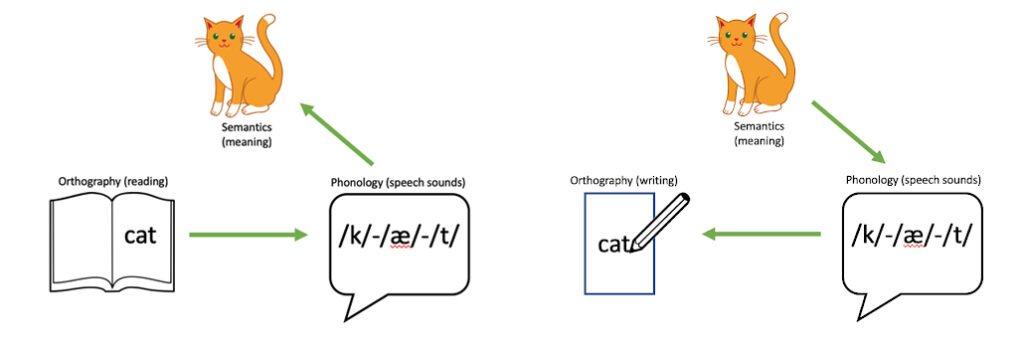[fusion_builder_container hundred_percent=”no” hundred_percent_height=”no” hundred_percent_height_scroll=”no” hundred_percent_height_center_content=”yes” equal_height_columns=”no” menu_anchor=”” hide_on_mobile=”small-visibility,medium-visibility,large-visibility” class=”” id=”” background_color=”” background_image=”” background_position=”center center” background_repeat=”no-repeat” fade=”no” background_parallax=”none” enable_mobile=”no” parallax_speed=”0.3″ video_mp4=”” video_webm=”” video_ogv=”” video_url=”” video_aspect_ratio=”16:9″ video_loop=”yes” video_mute=”yes” video_preview_image=”” border_size=”” border_color=”” border_style=”solid” margin_top=”” margin_bottom=”” padding_top=”” padding_right=”” padding_bottom=”” padding_left=”” admin_toggled=”no”][fusion_builder_row][fusion_builder_column type=”1_1″ layout=”1_1″ spacing=”” center_content=”no” link=”” target=”_self” min_height=”” hide_on_mobile=”small-visibility,medium-visibility,large-visibility” class=”” id=”” background_color=”” background_image=”” background_position=”left top” background_repeat=”no-repeat” hover_type=”none” border_size=”0″ border_color=”” border_style=”solid” border_position=”all” animation_type=”” animation_direction=”left” animation_speed=”0.3″ animation_offset=”” last=”no”][fusion_imageframe image_id=”13100″ max_width=”” style_type=”none” stylecolor=”” hover_type=”none” bordersize=”” bordercolor=”” borderradius=”” align=”none” lightbox=”no” gallery_id=”” lightbox_image=”” alt=”Dyslexia” link=”” linktarget=”_self” hide_on_mobile=”small-visibility,medium-visibility,large-visibility” class=”” id=”” animation_type=”” animation_direction=”left” animation_speed=”0.3″ animation_offset=””]https://stixrud.com/wp-content/uploads/2019/03/7F17AD1F-9E99-4353-9833-E056BA8BA246.png[/fusion_imageframe][/fusion_builder_column][/fusion_builder_row][/fusion_builder_container][fusion_builder_container hundred_percent=”no” hundred_percent_height=”no” hundred_percent_height_scroll=”no” hundred_percent_height_center_content=”yes” equal_height_columns=”no” menu_anchor=”” hide_on_mobile=”small-visibility,medium-visibility,large-visibility” class=”” id=”” background_color=”” background_image=”” background_position=”center center” background_repeat=”no-repeat” fade=”no” background_parallax=”none” enable_mobile=”no” parallax_speed=”0.3″ video_mp4=”” video_webm=”” video_ogv=”” video_url=”” video_aspect_ratio=”16:9″ video_loop=”yes” video_mute=”yes” video_preview_image=”” border_size=”” border_color=”” border_style=”solid” margin_top=”” margin_bottom=”” padding_top=”” padding_right=”” padding_bottom=”” padding_left=”” admin_toggled=”no”][fusion_builder_row][fusion_builder_column type=”1_1″ layout=”1_1″ spacing=”” center_content=”no” link=”” target=”_self” min_height=”” hide_on_mobile=”small-visibility,medium-visibility,large-visibility” class=”” id=”” background_color=”” background_image=”” background_position=”left top” background_repeat=”no-repeat” hover_type=”none” border_size=”0″ border_color=”” border_style=”solid” border_position=”all” animation_type=”” animation_direction=”left” animation_speed=”0.3″ animation_offset=”” last=”no”][fusion_tagline_box backgroundcolor=”” shadow=”no” shadowopacity=”0.70″ border=”1″ bordercolor=”” highlightposition=”left” content_alignment=”left” link=”” button=”” linktarget=”_self” modal=”” button_size=”” button_type=”” button_shape=”” buttoncolor=”default” title=”” description=”SSByZWNlbnRseSBoYWQgYSBjb252ZXJzYXRpb24gd2l0aCBteSBjb2xsZWFndWUsIERvbm5hIEhlbmRlcnNvbiwgUHN5LkQuLCBhYm91dCBhIGZvcm0gb2YgZHlzbGV4aWEgdGhhdCBzaGUgaGFzIG5vdGljZWQgaW4gc29tZSBvZiBoZXIgY2xpZW50cyB3aXRoIGF1dGlzbS4gTXkgY3VyaW9zaXR5IHdhcyBwaXF1ZWQgYmVjYXVzZSBJIGhhZCBub3RlZCBzaW1pbGFyIHBhdHRlcm5zIG9mIHNwZWxsaW5nIGVycm9ycyBpbiBhIG51bWJlciBvZiBteSBjbGllbnRzLCBidXQgY291bGRu4oCZdCBmaW5kIGEgZGVzY3JpcHRpb24gb2YgdGhlIHBoZW5vbWVub24gaW4gYm9va3MgYW5kIGFydGljbGVzIGRlc2NyaWJpbmcgbW9yZSBjb21tb24gZm9ybXMgb2YgZGV2ZWxvcG1lbnRhbCBkeXNsZXhpYS4gV2hlbiBJIGFza2VkIERyLiBIZW5kZXJzb24gZm9yIGRldGFpbHMsIHNoZSBzZW50IHRoZSBmb2xsb3dpbmcgZXNzYXksIHdoaWNoIHNoZSBoYXMgZ3JhY2lvdXNseSBhZ3JlZWQgdG8gYWxsb3cgbWUgdG8gcG9zdC4=” margin_top=”10″ margin_bottom=”” hide_on_mobile=”small-visibility,medium-visibility,large-visibility” class=”” id=”” animation_type=”” animation_direction=”left” animation_speed=”0.3″ animation_offset=””]
– Sarah Wayland
[/fusion_tagline_box][fusion_text columns=”” column_min_width=”” column_spacing=”” rule_style=”default” rule_size=”” rule_color=”” class=”” id=””]
Author: Donna Henderson, Psy. D
Poor awareness of the sounds of language or a lack of understanding of the spelling-sound correspondence is the cause of the most common type of dyslexia. People with this type of dyslexia will make spelling errors that do not make phonetic sense (such as spelling “desk” as deks or “with” as weth). In contrast, I have noticed that some of the children I work with have an unusual pattern of spelling errors. These kids seem to understand which letters go with which sounds, but they actually over-rely on the letter-sound correlation. For example, they might spell the word “garbage” as garbij or the word “wiggle” as wigul.
To understand these different types of errors, it’s important to first understand how children learn to read as well as what typical dyslexia looks like. It all starts with the phoneme.
A phoneme is the smallest unit of sound, and there are 44 phonemes in the English language. In the word “cat”, for instance, there are three phonemes (/k/ – /æ/– /t/). Both speaking and reading rely on being able to identify, distinguish, blend, and manipulate these phonemes. Good readers know that specific written letters are associated with particular sounds (the phonemes) and that the sounds (and thus the letters) must be in the proper order.

However, the English writing system does not necessarily observe a one-to-one correspondence between letters and sounds. For example, if we see the letter “k” we associate it with the /k/ sound, but if we see the letter in a certain context (knife), we know that the sequence of letters will alter the sound of that particular “k”. Likewise, the letter “c” can be pronounced as /s/ or /k/ (as in “concise”), depending on the word’s origin and the letters that surround it. Knowing the rules that govern a letter’s pronunciation can make decoding words much easier. There are many of these irregular words, such as “laugh” and “neighbor.” These words cannot be sounded out; to read or spell them, the reader must either be able to recognize the word automatically from memory (a sight word) or know how to apply the unique reading and spelling rules.
The phonological awareness skills (to sound out regular words) coupled with a knowledge of the spelling rules of English (to cope with irregular words) are both necessary for fluent reading and writing.

In the most common type of dyslexia, phonological dyslexia, people do not have adequate phonological skills, so they have difficulty sounding out or spelling even regular words.
Other students, however, may have adequate phonological skills but fail to fluently use the spelling rules of a language, particularly for irregular words. They may continue to erroneously believe that words are a perfect representation of spoken phonemes. This type of dyslexia is less common and is referred to as surface dyslexia or orthographic dyslexia.
Whereas people with phonological dyslexia have difficulty sounding out words, people with surface dyslexia rely on the spelling-sound correspondence too heavily. For them, words that cannot be sounded out (the irregular words, such as “through”) are misread or misspelled because people with surface dyslexia rely on sounds when spelling (seshen for “session”) without applying the spelling rules of their language and without being flexible for words that don’t follow the typical rules. This can lead to very slow and effortful reading as well as poor spelling.
Curiously, over time I became aware that the only children I tested who had surface dyslexia were autistic, and I also came to realize that quite a few of them had it. To be clear, it is entirely possible that there are non-autistic children with this type of dyslexia; I simply have not come across any of them.
I also consistently noticed that some of these same children use somewhat random capitalization and punctuation, much more than one would expect with just inattentive errors. Literally, these kids will randomly Capitalize, words and insert Punctuation At Various points in. sentences.
It was this observation that led me consider whether this form of dyslexia was actually a reflection of the context blindness described by Peter Vermeulen in his book, Autism as Context Blindness. We sound out and spell irregular words based on context (is it “dear”? or “deer”?), and we also use punctuation and capitalization based on context (where it appears in the sentence).
There is still much we do not understand about this presentation of dyslexia, particularly in students with autism. Moreover, the extent it is related to context blindness, rigid thinking, or other factors almost certainly varies from person to person. Understanding which factors contribute to the specific form of dyslexia observed in a child will help inform the best type of reading intervention for that child.
If you have a child who is struggling to read, you will want to work with a professional who has both broad and deep knowledge about reading skills, and who can formulate direct multi-sensory instruction based on the specific needs of the student. This might be a speech language therapist (CCC-SLP) who specializes in reading disabilities, a certified Educational Therapist (BCET or ET/P), a psychologist who specializes in reading (PhD), or a Certified Academic Language Therapist (CALT). Make sure to ask how they will work with a student who has your child’s profile to see if the approach they recommend makes sense.
[/fusion_text][fusion_text columns=”” column_min_width=”” column_spacing=”” rule_style=”default” rule_size=”” rule_color=”” class=”” id=””]
Read the original article on guidingexceptionalparents.com courtesy of Sarah C. Wyland, Ph.D.
[/fusion_text][/fusion_builder_column][/fusion_builder_row][/fusion_builder_container]

